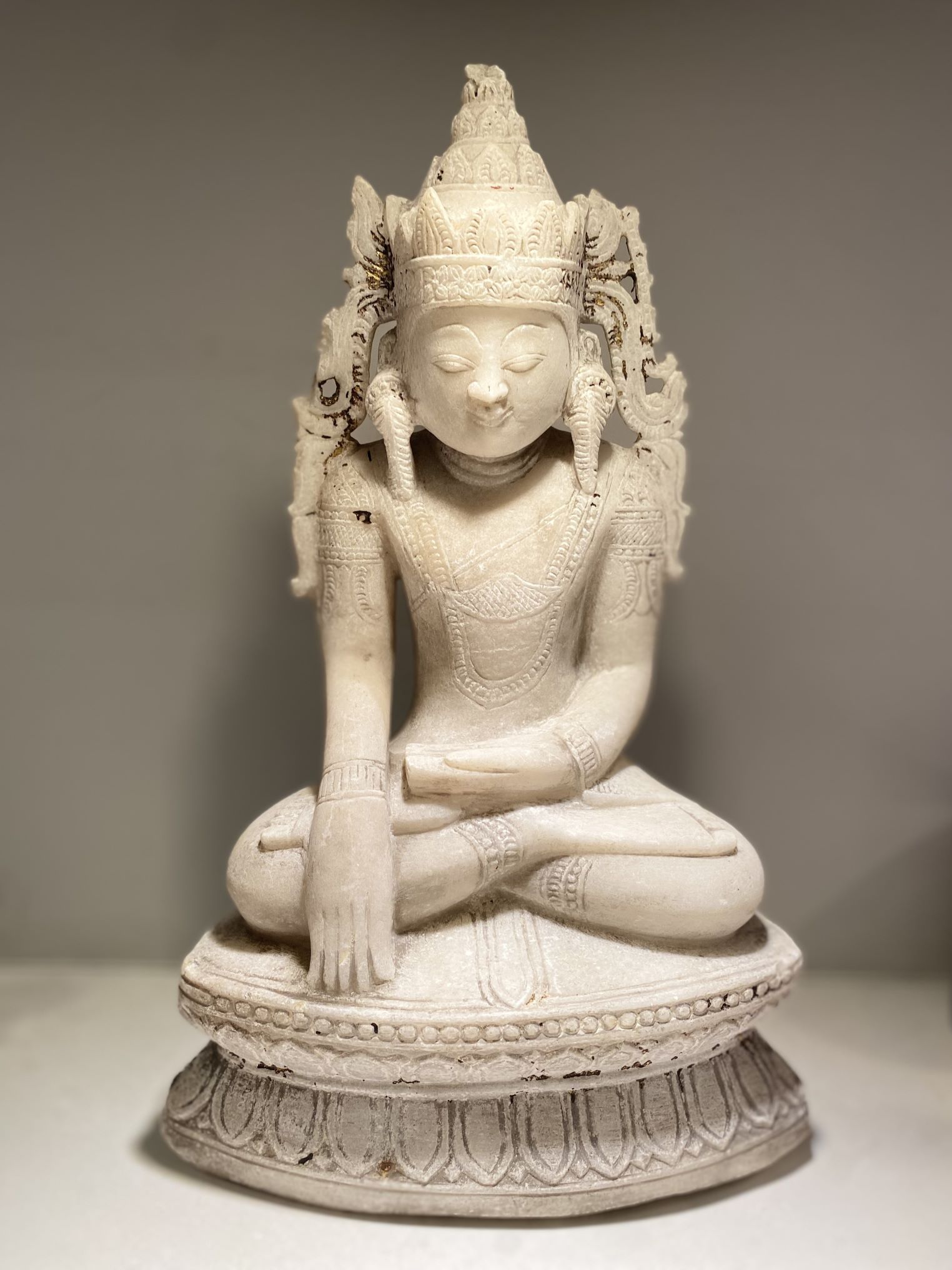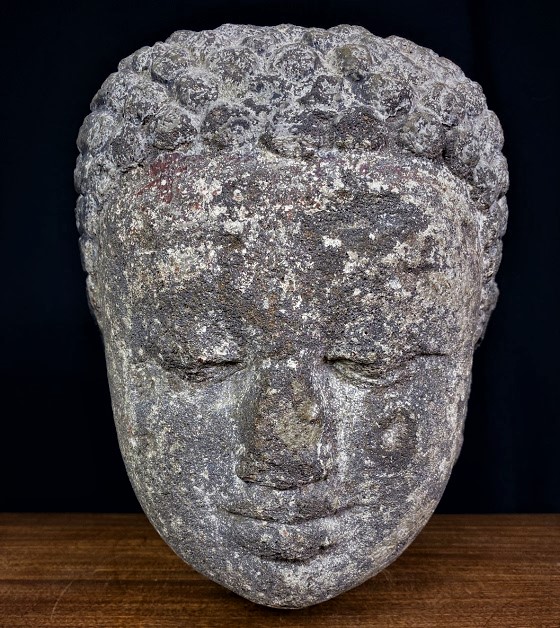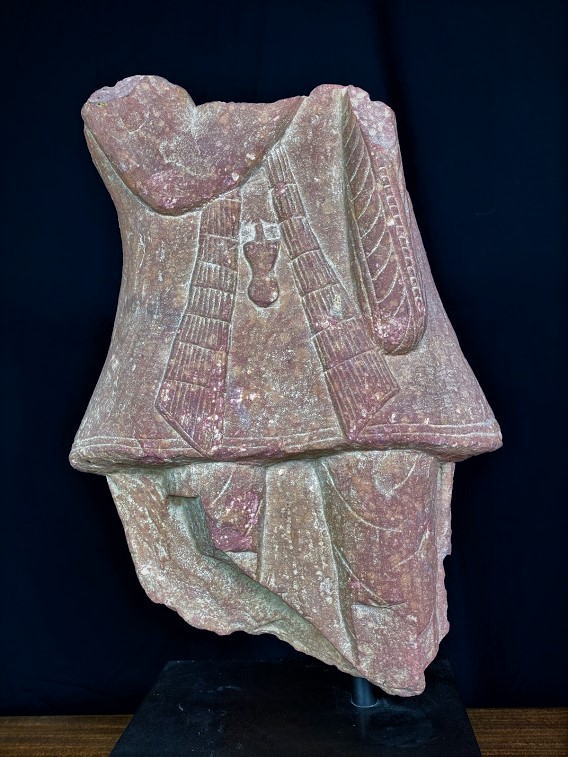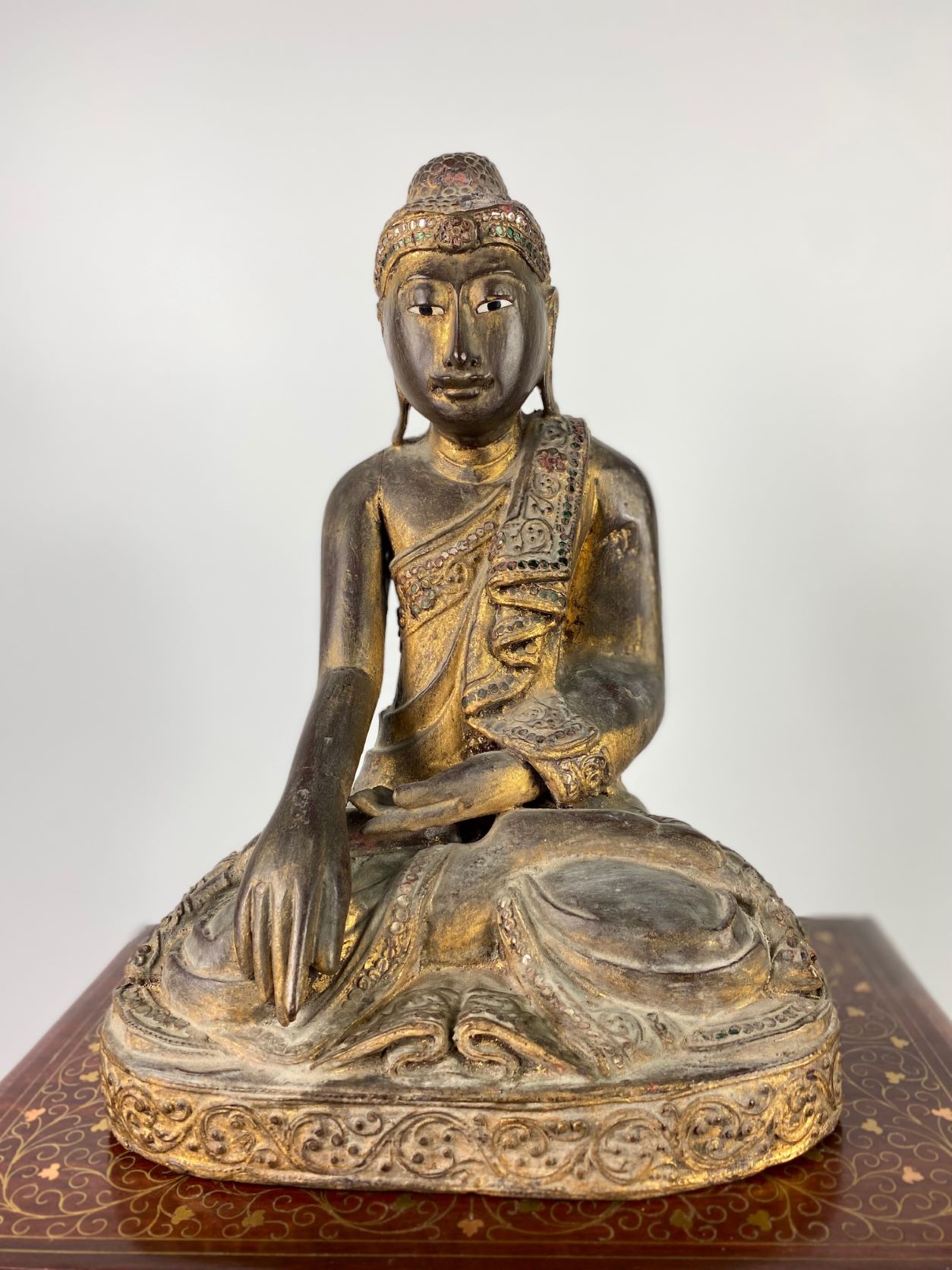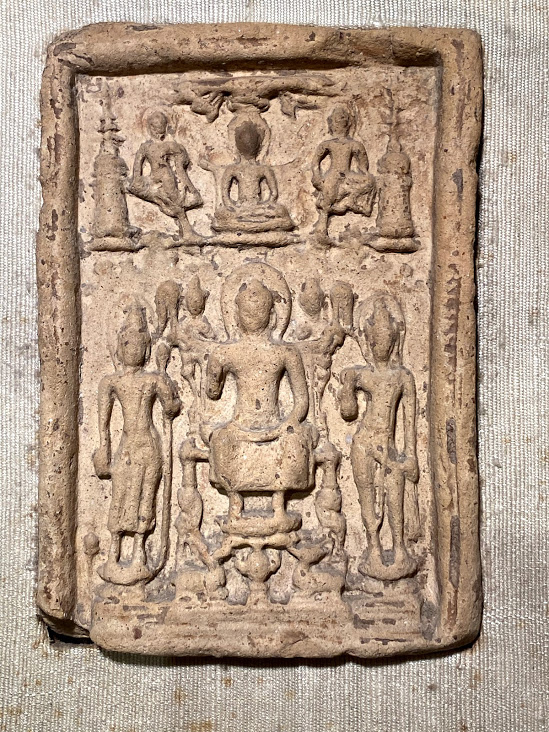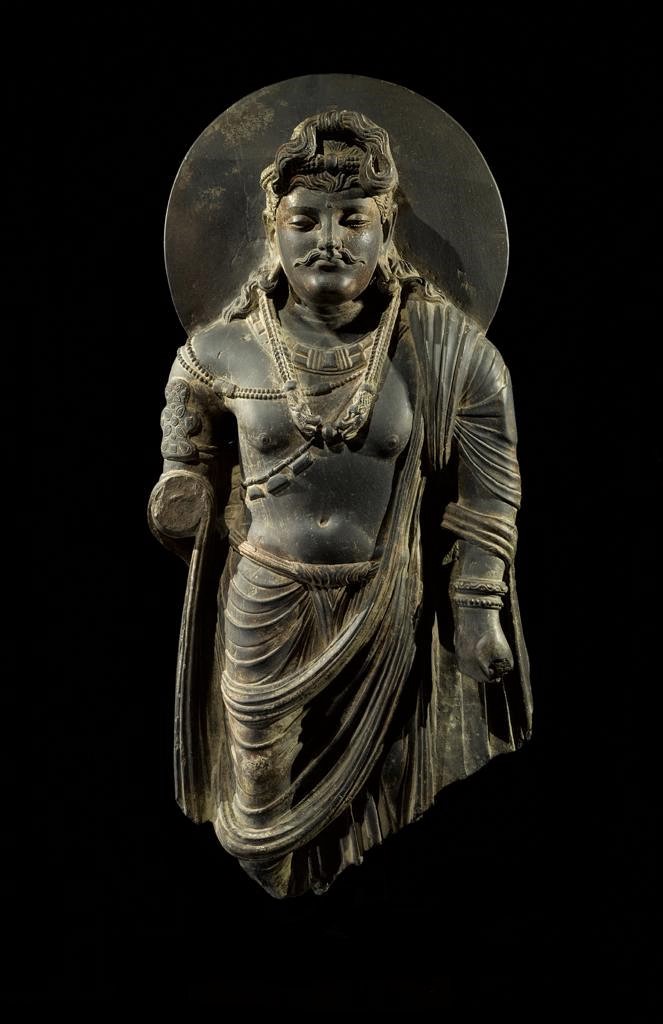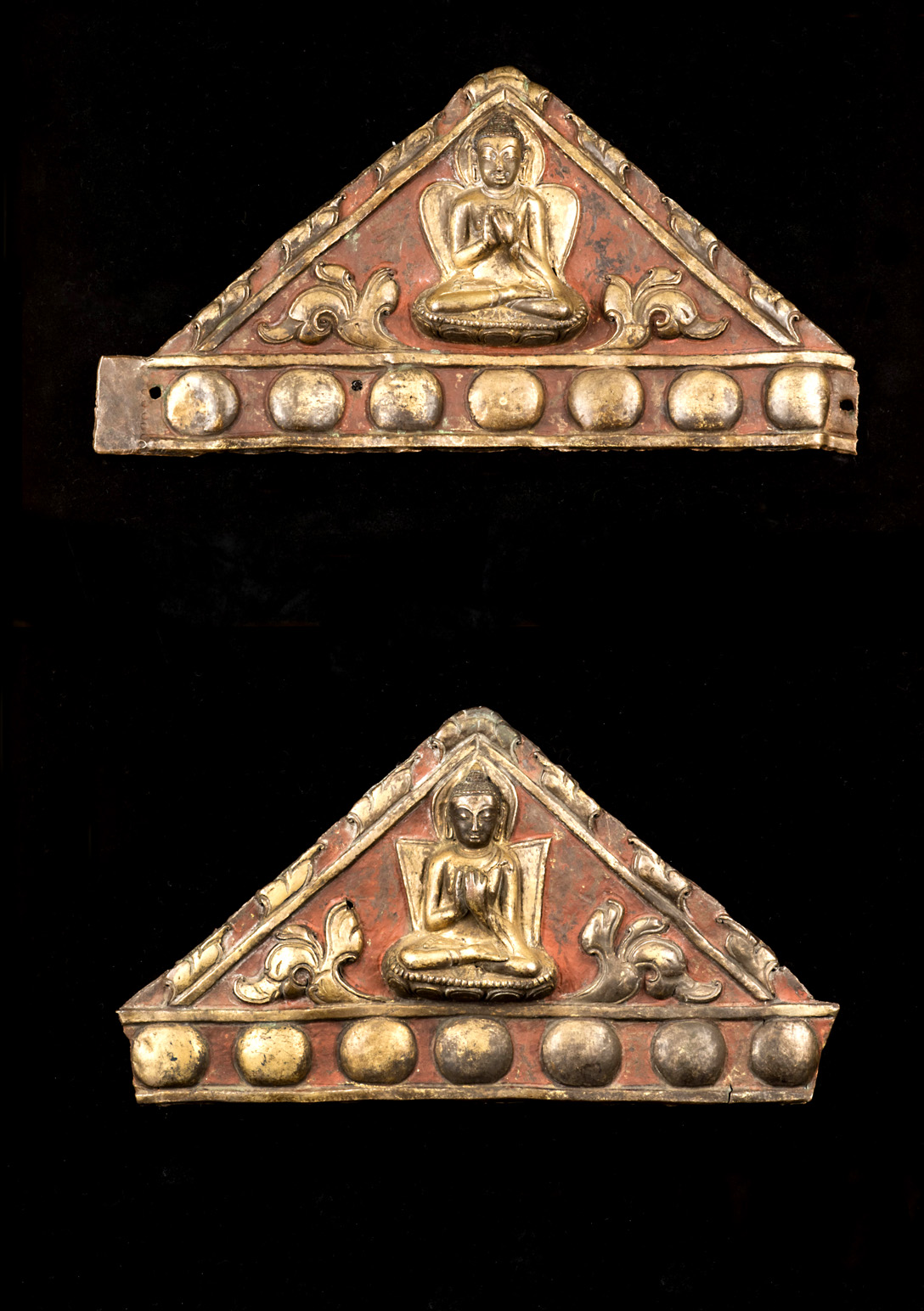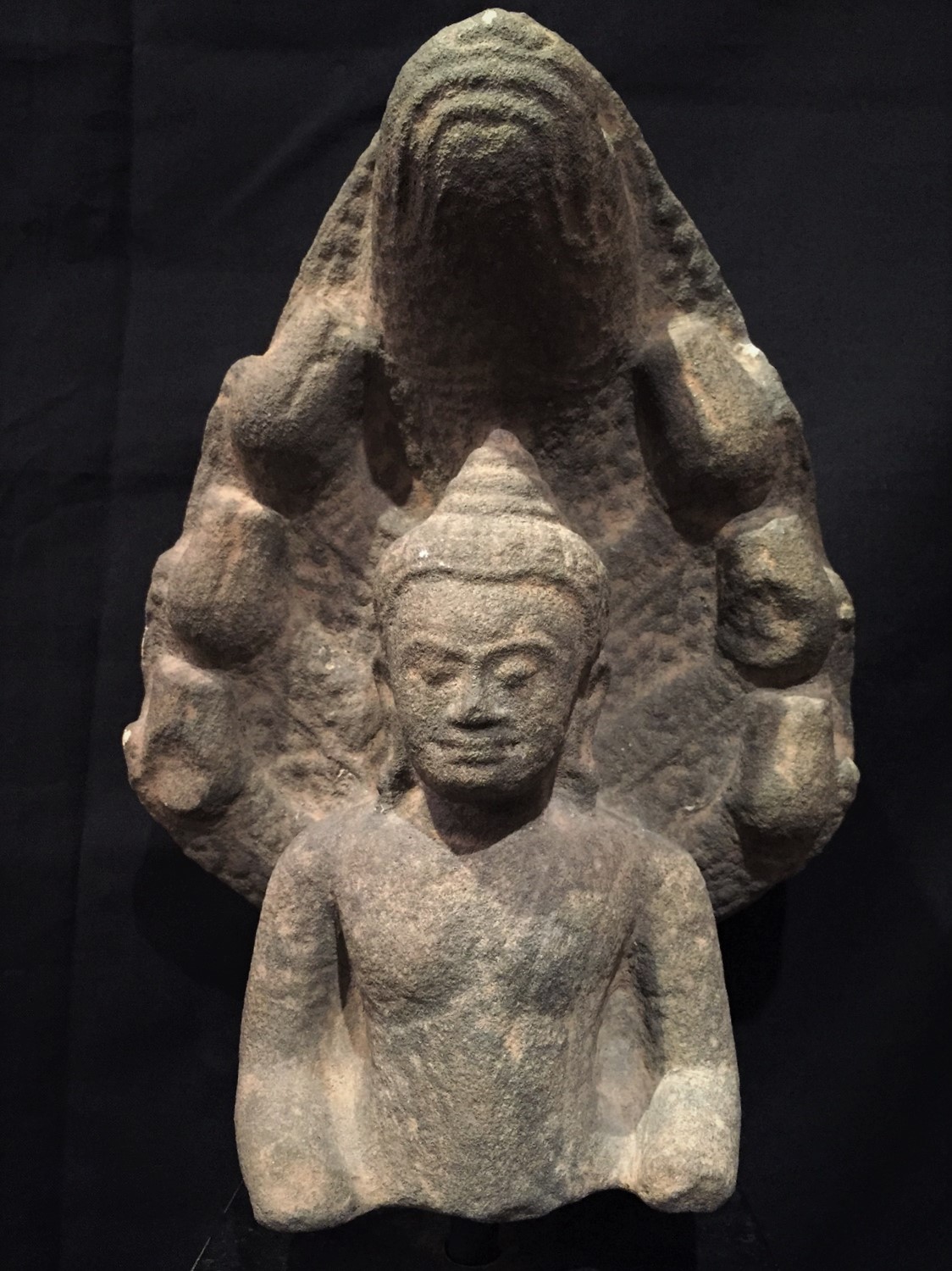



ST1081 SEATED BRONZE JAMBHUPATI BUDDHA
BURMA, ARAKAN, 17TH -18TH CENTURY
H. 32 CMS, 12 ½ INS
Mounted on an old slate base.
A finely cast, crowned and jewelled, deep green patinated bronze figure of Buddha, seated on a lotus base with his right hand lowered in bhumisparsimudra (the gesture of summoning the earth to witness), the face meditative and serene beneath deeply arched brows and a tall crown enclosing a lotus finial.
Sylvia Fraser-Lu describes the origin of depictions of Buddha as Jambhupati:
‘The idea of representing Lord Buddha in something more splendid than his characteristic monk’s garb is thought to have come from a story where the Master dressed in royal attire to humble a proud overbearing king, Jambhupati, who was threatening one of his followers. The arrogant king was suitably overawed and subsequently converted. Buddha figures in kingly robes have come to be called jambhupati images. This type of Buddha figure is popular throughout Southeast Asia, and had its origins in Indian art belonging to the Pala period (circa A.D. 750-1150)’.
For three similar examples see Sylvia Fraser-Lu, Buddha Images from Burma, Part II: Bronze and Related Metals, Arts of Asia, March 1981 or see the following link: https://www.lasieexotique.com/page/LasieExotique-mag_buddha_II.html
See also, plates 49 and 50 in San Tha Aung, The Buddhist Art of Ancient Arakan, Rangoon: Department of Higher Education, 1979.
Provenance: Private English collection.
 Go back to Works of art
Go back to Works of art




